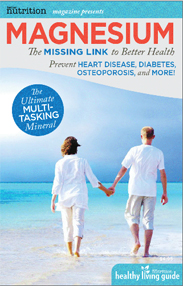Magnesium and Heart Rate Variability
Effects of Serum Calcium and Magnesium on Heart Rate Variability in Adult Women
Biol Trace Elem Res. 2012 Oct 11.
Kim YH, Jung KI, Song CH.
Source:
Department of Ophthalmology, College of Medicine, The Catholic University of Korea, Seoul, South Korea.
Abstract:
The present study was designed to evaluate the association of serum calcium (Ca) and magnesium (Mg) levels with heart rate variability (HRV). One hundred and sixteen adult women were recruited in this cross-sectional study. Serum Ca and Mg levels were measured, and HRV in each time and frequency domain was recorded for 5 min. Mean heart rate and standard deviation of the normal to normal interval (SDNN) and root mean square of differences of successive RR interval (RMSSD) in time domain and total power (TP), low-frequency power (LF), high-frequency power (HF), and LF/HF ratio in frequency domain were compared according to the tertiles of serum Ca and Mg levels and Ca/Mg ratio. The associations between serum Ca and Mg levels and Ca/Mg ratio with HRV were evaluated using regression analyses. Mean heart rate tended to increase from the lowest to the highest tertile of Ca levels (p=0.081), whereas it decreased significantly with higher Mg levels (p=0.026). Increasing SDNN value was observed from the lowest to the highest tertile of Mg levels (p=0.009). SDNN value decreased significantly from the lowest to the highest tertile of Ca/Mg ratio (p=0.030). Participants in the lowest tertile of Ca/Mg ratio had significantly higher TP and LF values compared to those in the middle and highest tertiles (p(p < 0.05). Decreasing SDNN, TP, and LF values were significantly associated with higher Ca/Mg ratios (p < 0.05). Associations of serum Mg level and Ca/Mg ratio with HRV could be one of the mechanisms involved in cardiovascular diseases.
Newsletter
![]()

Want valuable information regarding the health benefits of magnesium, latest studies, expert interviews,videos and health tips? Enter your name and email address and you can start receiving valuable health information right away.
Featured On:








